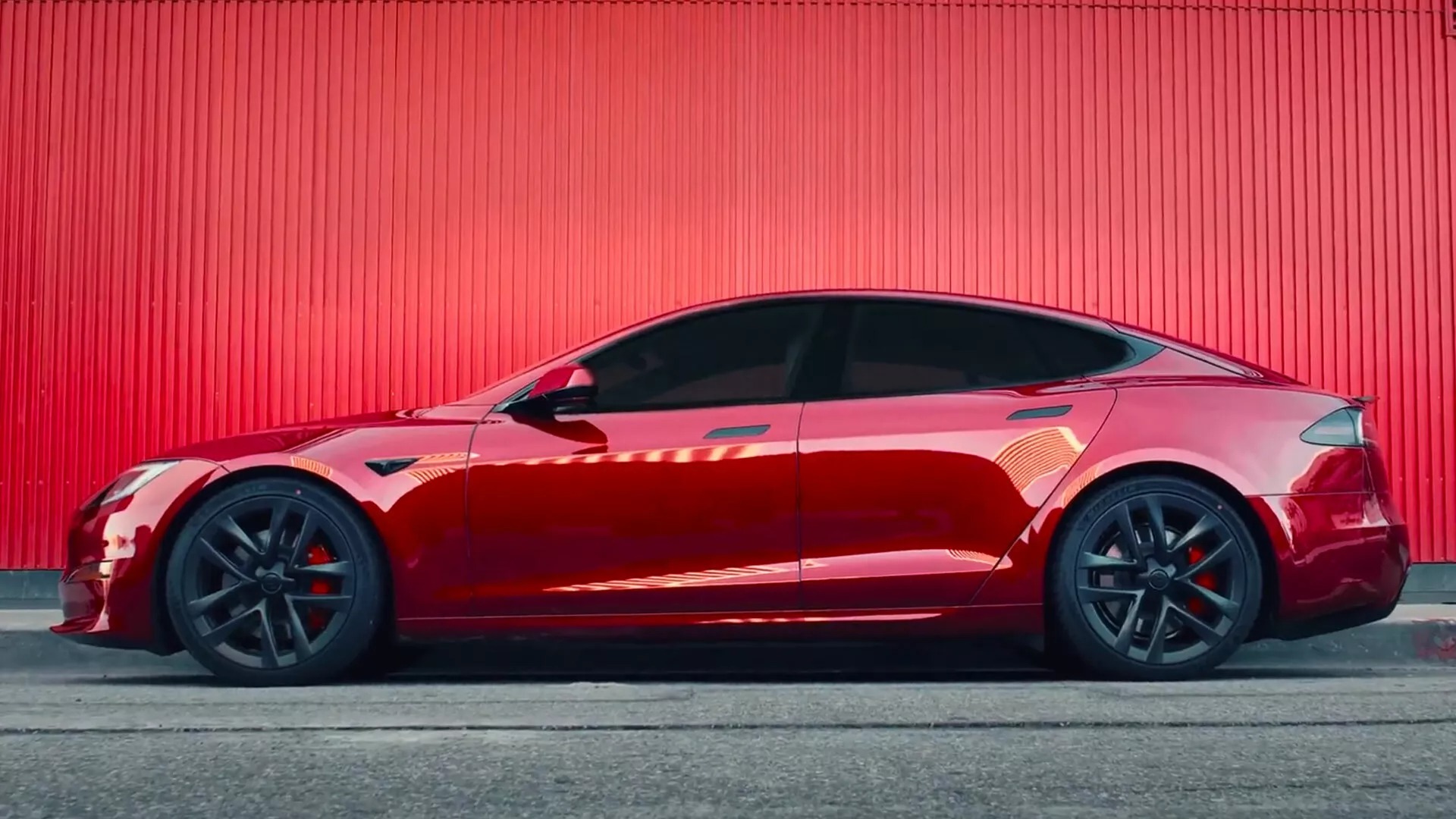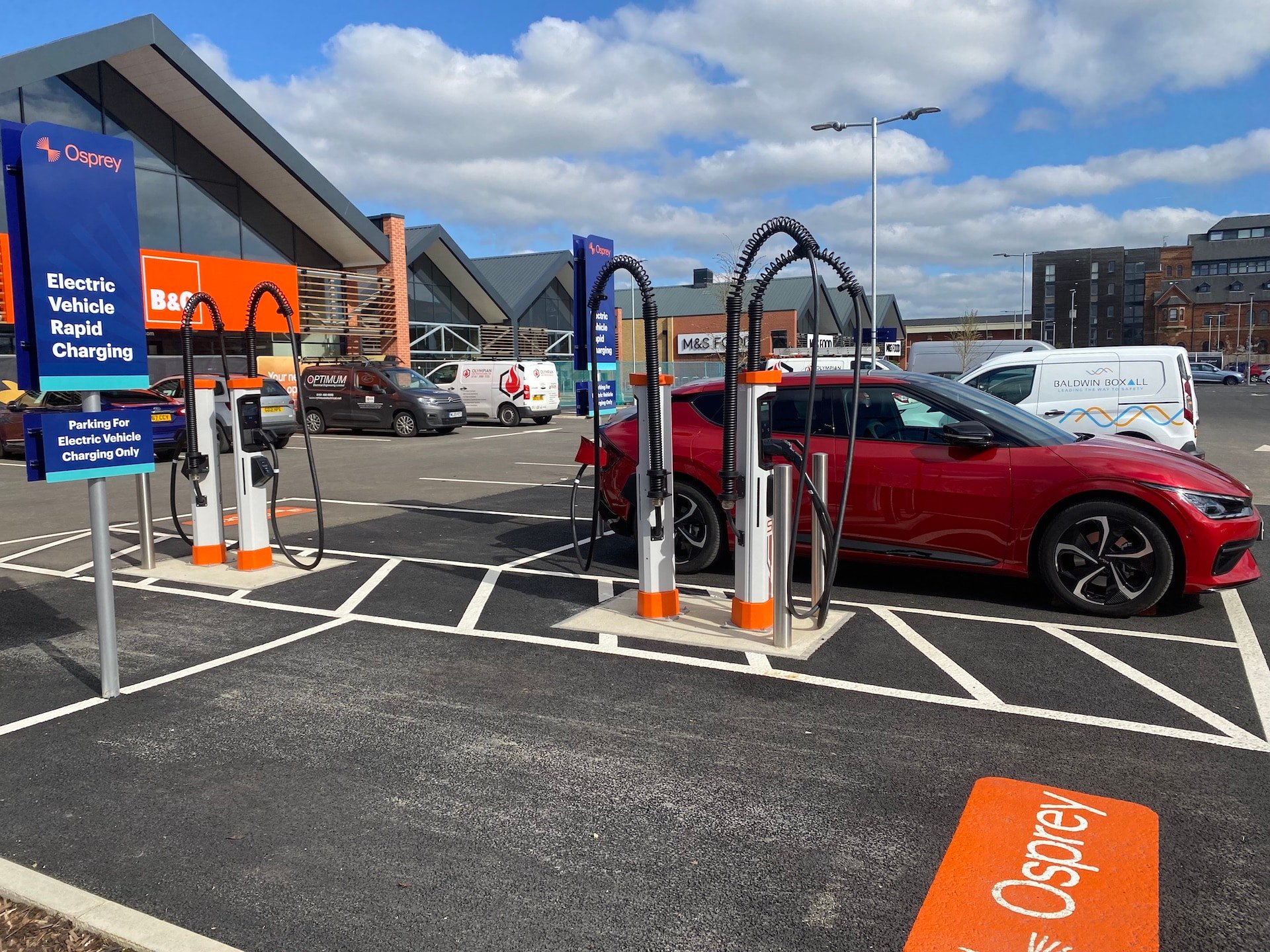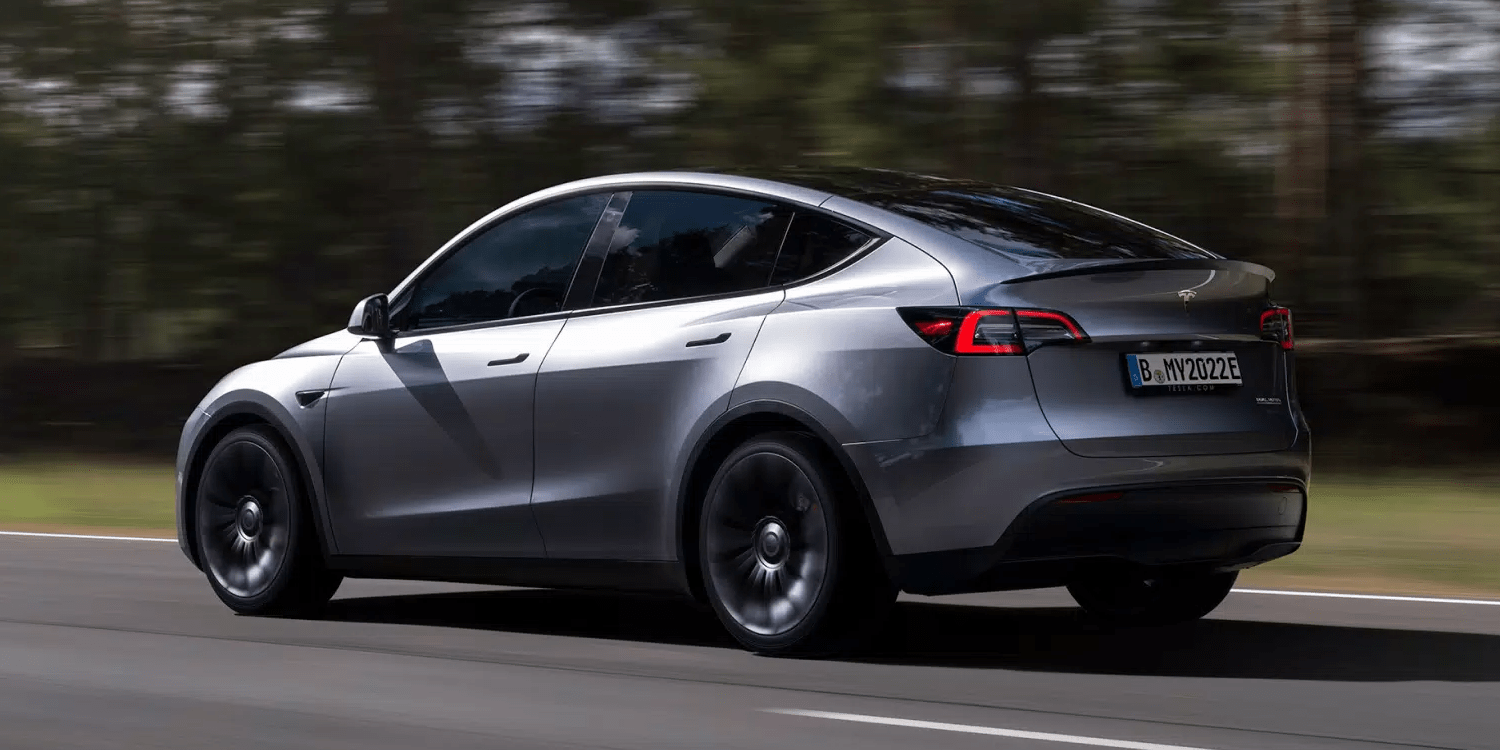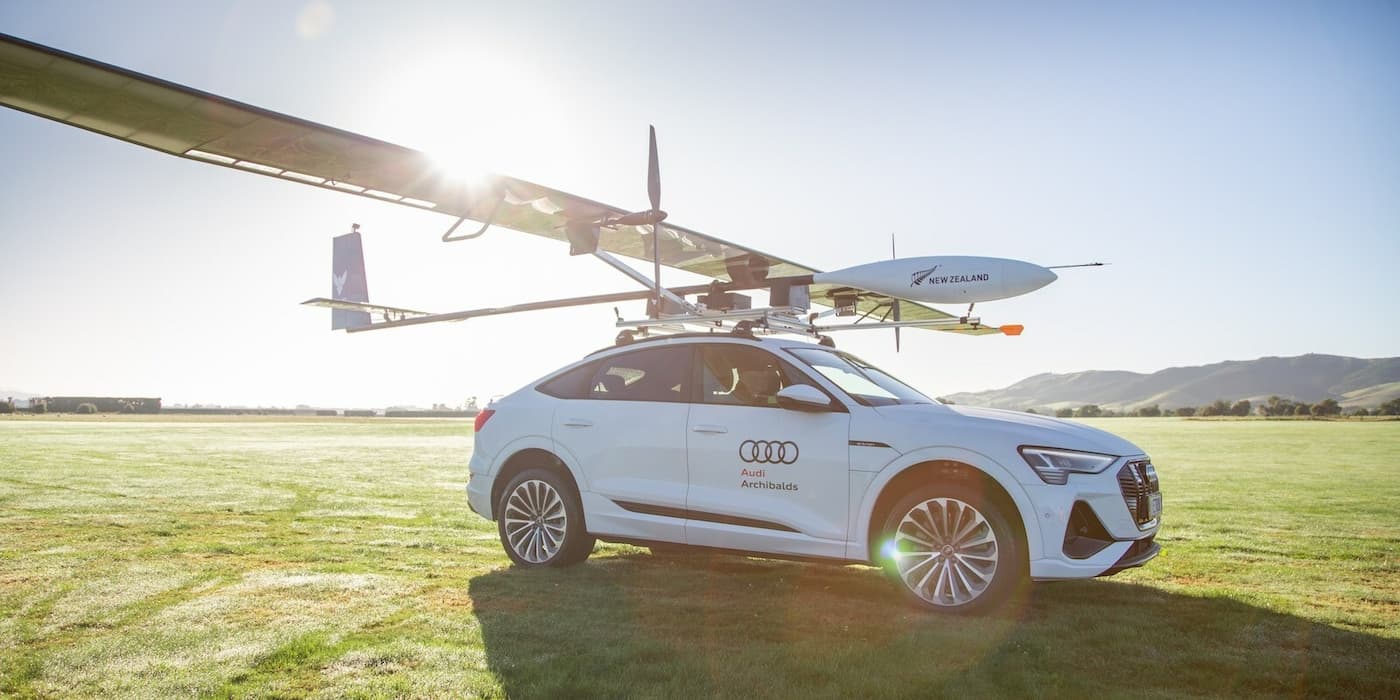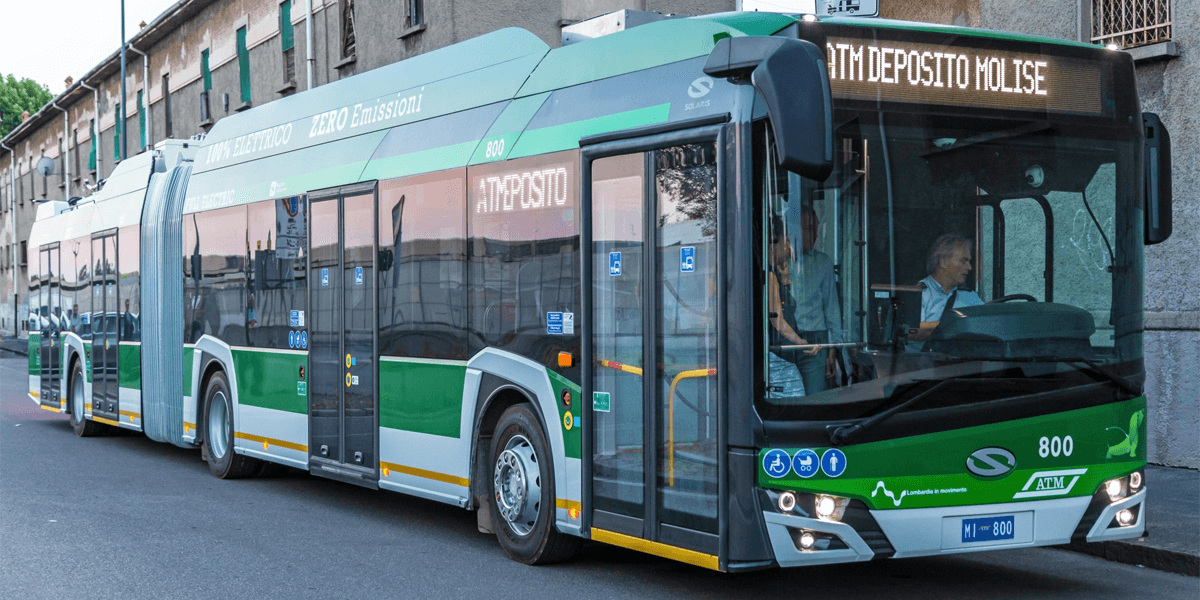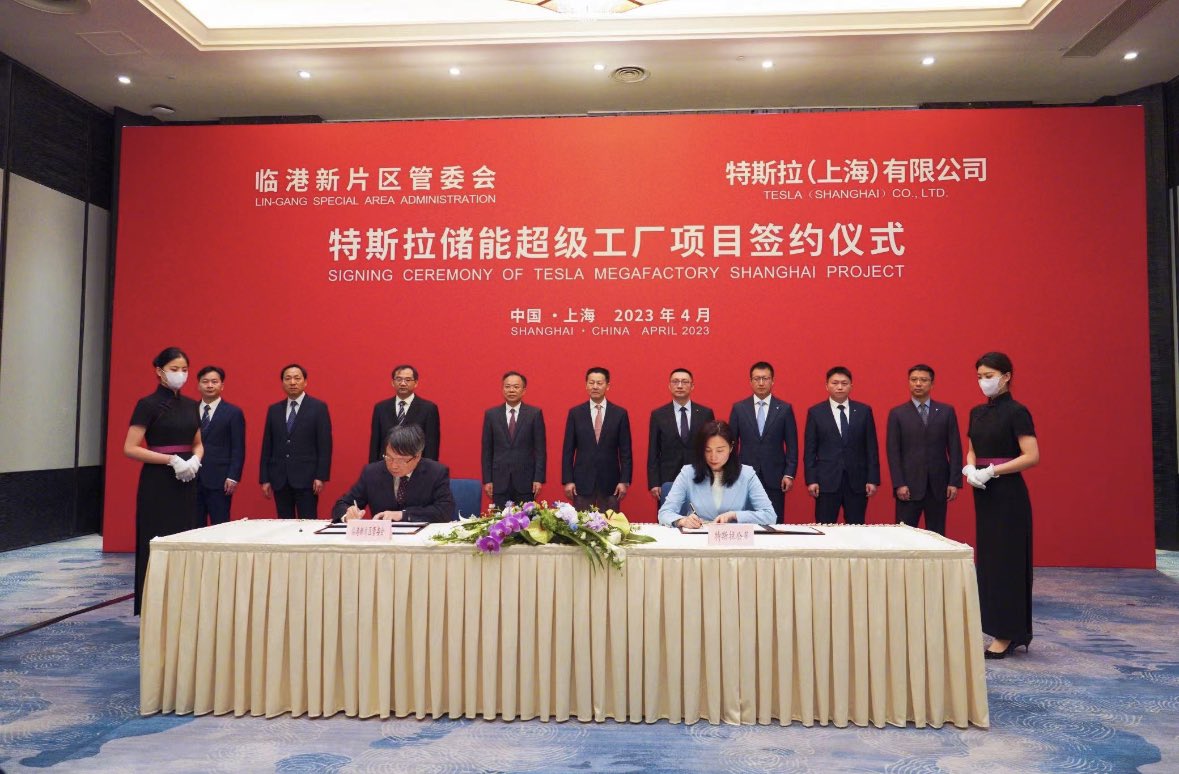Tesla has recently filed a patent for its next-generation active suspension system that represents a major step forward in its suspension technology. The new system will be far more sophisticated than the company’s current air suspension design.
The luxury car market has seen many automakers enhance their adaptive suspension systems with active wheel position control. Unlike traditional suspension systems that merely raise or lower the suspension or change the spring and damper rates based on preset values, the new-generation active suspension systems continuously adjust the wheels to their most advantageous positions to compensate for road surface irregularities.
Tesla’s new patent aims to do the same by dynamically changing the suspension strut length based on current and expected road surface conditions. An actuator motor located in the top strut mount assembly uses a belt drive assembly to turn a threaded screw that connects to the strut shaft. This alters the strut shaft length by moving the strut’s upper mounting point up or down, which enables active control over the wheel’s position.

While electrically-actuated wheel position control systems have been proposed for decades, they have always required a significant amount of electrical power to function. However, Tesla’s battery system has enough power to make such systems work, and the electric motors that power the adjustable struts are assisted by series-mounted passive springs and dampers to reduce some of the load and frictional losses.
The control system is another crucial component of this new suspension design. Vibration sensors, accelerometers, wheel position sensors, and pitch and roll sensors are among the system inputs, and Tesla’s anonymized fleet data collection system is expected to provide information on road conditions. Furthermore, camera systems, similar to those already installed in Tesla vehicles, will likely scan the surface ahead to anticipate optimal wheel positions and other suspension settings as the car moves along the road.

In addition to managing ride height and suspension leveling, this new suspension control system can detect potholes, ridges, and ruts in advance and retract the affected wheel into its housing in response, thereby reducing the impact between the wheel and the road irregularities. The dynamically-adjustable strut shaft lengths will also enable the vehicle to counteract body roll without upsetting the spring- and damper rates and eliminate pitch and squat while accelerating and braking.
Tesla’s current Model S and Model X cars use a conventional height-adjustable air suspension system with adaptive spring and damper rates. This system provides variable ride height and suspension stiffness and was on par with its competitors when these two models were released in 2012 and 2015, respectively.

Tesla’s new active suspension system represents a significant technological advancement that will further enhance the company’s position in the electric vehicle market. By continuously adjusting the wheel position to compensate for road surface irregularities, Tesla vehicles will offer a more comfortable and smoother ride, setting a new benchmark in the industry.

